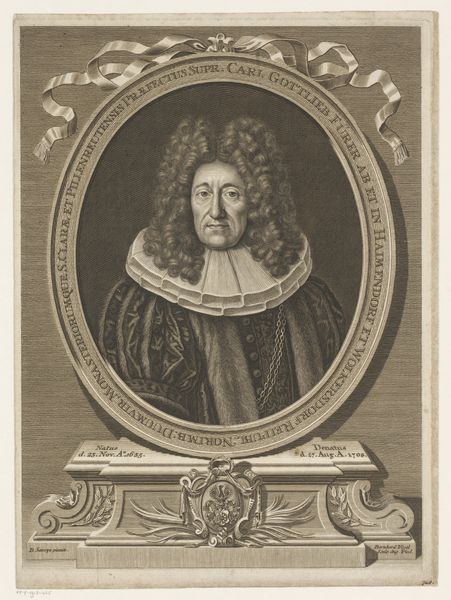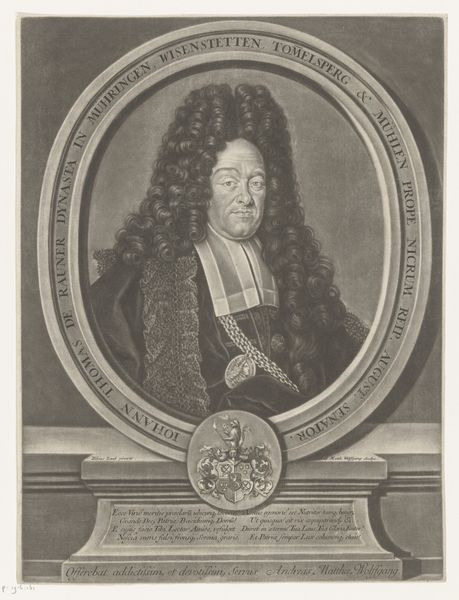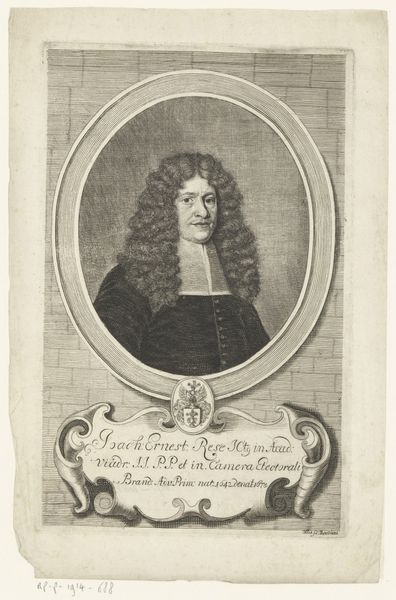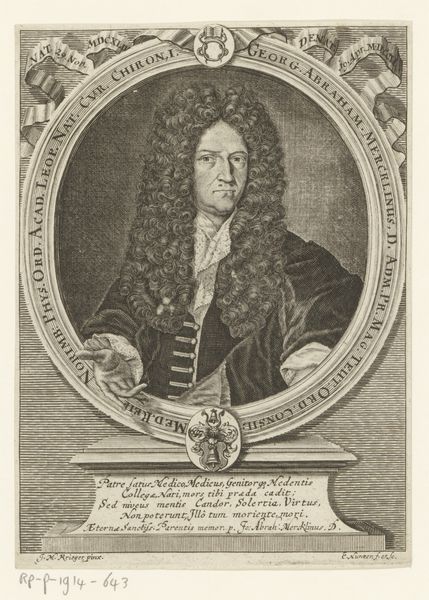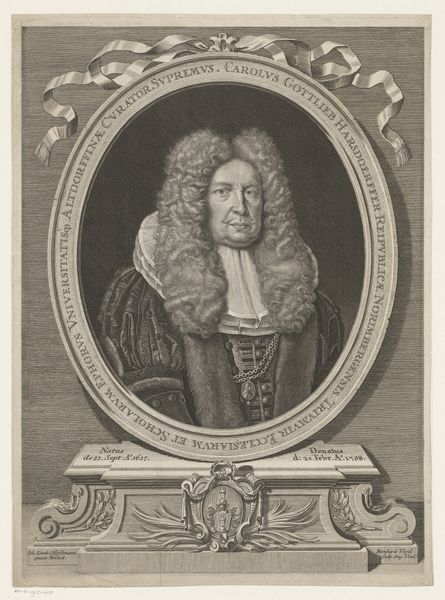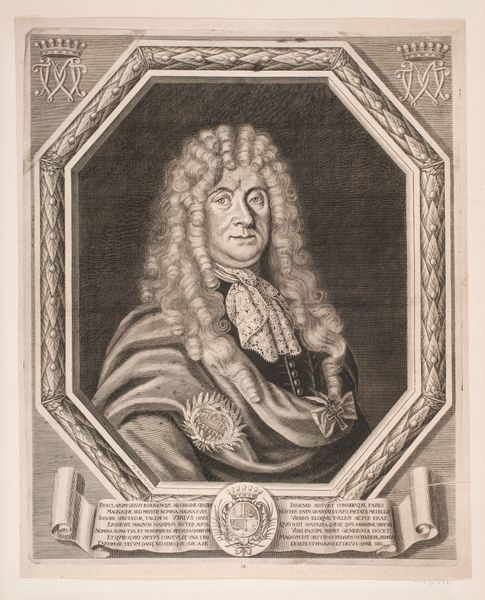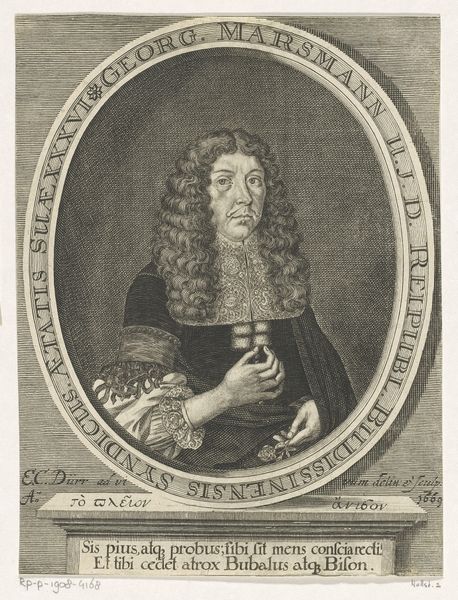
Dimensions: height 373 mm, width 270 mm
Copyright: Rijks Museum: Open Domain
This engraving of Johann Karl Schlüsselfelder was made by Bernhard Vogel, a German artist active in the late 17th and early 18th centuries. Schlüsselfelder’s portrait gives us a glimpse into the world of the Holy Roman Empire and its complex social hierarchies. The sheer size of Schlüsselfelder’s wig speaks volumes about his status. It’s a marker of wealth and belonging to the upper echelons of society. Note, too, the elaborate frame, festooned with ribbons and bearing Schlüsselfelder’s coat-of-arms. These are all visual cues designed to communicate power and lineage. Portraits like these were tools for self-fashioning. They present a carefully constructed image of the sitter, reinforcing existing social norms and power structures. As art historians, we examine such images alongside other historical documents – letters, diaries, financial records – to understand the full story of their creation and the world they represent.
Comments
No comments
Be the first to comment and join the conversation on the ultimate creative platform.
